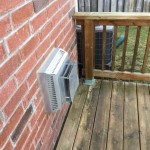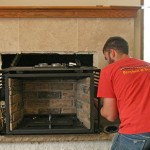Corner Fireplace Insert Dimensions: A Comprehensive Guide
Selecting a corner fireplace insert requires careful consideration of dimensions to ensure a proper fit, optimal performance, and aesthetic integration into the existing space. Unlike traditional fireplace inserts designed for straight-wall installations, corner units are specifically engineered to accommodate angled hearths, presenting unique dimensional challenges. This article provides a detailed exploration of corner fireplace insert dimensions, encompassing key measurements, relevant factors influencing size selection, and practical considerations for a successful installation.
Understanding Key Corner Fireplace Insert Dimensions
When evaluating corner fireplace insert dimensions, several key measurements are critical. These dimensions dictate the insert's compatibility with the existing fireplace opening and the overall visual impact within the room. Precise measurements taken prior to purchase are vital to avoid issues during installation and ensure optimal performance.
Width: The width of a corner fireplace insert refers to the horizontal dimension across the front of the unit. This measurement is crucial for determining if the insert will adequately fill the existing corner fireplace opening. It's important to measure the width of the fireplace opening at both the front and the back, as corner fireplaces often taper or have irregular shapes.
Depth: Depth measures the distance from the front of the insert to the back. This dimension is particularly important to ensure sufficient clearance within the fireplace cavity. Adequate depth is necessary for proper airflow and heat dissipation, preventing overheating and potential safety hazards. Measure the depth of the existing fireplace cavity carefully, considering any obstructions or irregularities within the firebox.
Height: The height of the corner fireplace insert indicates the vertical dimension from the base of the unit to the top. This measurement is critical for ensuring the insert fits comfortably within the existing fireplace opening without being excessively tall or short. Measure the height of the fireplace opening accurately, accounting for any lintel or hearth extensions.
Angle: Corner fireplace inserts are designed to fit into a specific corner angle, typically 90 degrees or 135 degrees. Confirm the angle of the existing corner fireplace before selecting an insert to ensure a proper fit. Manufacturers often specify the intended corner angle in the product specifications.
Hearth Extension Requirements: The hearth extension is the non-combustible material extending outward from the fireplace opening. Building codes and manufacturer specifications often dictate minimum hearth extension requirements based on the size and type of fireplace insert. These requirements are in place to protect flooring and surrounding combustible materials from heat and embers. Confirm the required hearth extension dimensions for the selected insert model and ensure the existing hearth meets those requirements or that modifications are made to comply with the code.
Flue Size: The flue is the chimney pipe that vents combustion gases from the fireplace. The flue size is typically specified in terms of its diameter or cross-sectional area. The selected corner fireplace insert must be compatible with the existing flue size to ensure proper drafting and efficient removal of exhaust gases. If the flue size is incompatible, modifications may be necessary, which can involve relining the chimney with a new flue liner of the appropriate size. Consultation with a qualified chimney sweep is highly recommended to determine flue size compatibility and identify any necessary modifications.
Factors Influencing Corner Fireplace Insert Size Selection
Several factors influence the optimal corner fireplace insert size for a particular application. These factors relate to the size of the room being heated, the desired heating capacity, and the aesthetic preferences of the homeowner.
Room Size and Heating Capacity: The size of the room that the corner fireplace insert will be heating is a primary factor in determining the appropriate BTU (British Thermal Unit) output. BTU is a measure of heat output. Larger rooms require higher BTU outputs to achieve the desired level of warmth. Consider the square footage of the room and the insulation levels when selecting an insert with the appropriate heating capacity. Manufacturers often provide guidelines indicating the recommended BTU output for a given room size.
Fireplace Opening Dimensions: The existing fireplace opening dimensions are a critical constraint in the selection process. The corner fireplace insert must fit within the opening while allowing for adequate clearance for installation and airflow. Measure the width, depth, and height of the opening accurately and compare these measurements to the dimensions of potential insert models. It's generally advisable to select an insert that is slightly smaller than the opening to allow for adjustments and proper ventilation.
Fuel Type: The type of fuel used by the corner fireplace insert can also influence the size requirements. Wood-burning inserts typically require a larger firebox than gas or electric inserts to accommodate sufficient fuel for extended burn times. Consider the fuel type preference and the associated size requirements when making a selection.
Aesthetic Considerations: The visual appearance of the corner fireplace insert is an important factor for many homeowners. Consider the overall style of the room and select an insert that complements the existing décor. The size of the insert relative to the fireplace opening and the surrounding wall space can significantly impact the overall aesthetic appeal. Balance the functional requirements of heating with the aesthetic desired look.
Efficiency Ratings: Fireplace inserts are rated for their efficiency, which measures the percentage of fuel energy that is converted into usable heat. Higher efficiency ratings translate to lower fuel consumption and reduced heating costs. Consider the efficiency rating of potential insert models when making a selection, particularly for those who plan to use the fireplace insert frequently as a primary heat source.
Practical Considerations for Corner Fireplace Insert Installation
Successful installation of a corner fireplace insert depends not only on accurate dimension assessment but also on careful planning and adherence to safety guidelines. Several practical considerations must be addressed to ensure a safe and efficient installation.
Professional Installation: While some homeowners may be tempted to attempt a DIY installation, professional installation is highly recommended, especially for gas and wood-burning inserts. Certified installers have the expertise and tools necessary to ensure proper venting, gas line connections, and adherence to building codes. Improper installation can lead to safety hazards such as carbon monoxide poisoning or fire.
Ventilation Requirements: Proper ventilation is critical for the safe and efficient operation of a corner fireplace insert. Ensure that the flue is properly sized and in good condition. Inspect the chimney for any obstructions or damage. If necessary, reline the chimney with a new flue liner of the appropriate size. Insufficient ventilation can lead to smoke backdrafting into the room or carbon monoxide buildup.
Clearance Requirements: Corner fireplace inserts generate substantial heat, so it's essential to maintain adequate clearance between the insert and any combustible materials. Follow the manufacturer's specifications for minimum clearance distances to walls, ceilings, and furniture. Insufficient clearance can lead to overheating and potential fire hazards.
Electrical Connections: Some corner fireplace inserts, particularly gas and electric models, require electrical connections for ignition, blowers, and other features. Ensure that the electrical wiring is properly sized and grounded according to local electrical codes. If necessary, hire a qualified electrician to install a dedicated electrical circuit for the fireplace insert.
Hearth Materials: The hearth extension should be constructed of non-combustible materials such as brick, stone, or tile. The hearth extension must be large enough to protect flooring and surrounding combustible materials from heat and embers. Ensure that the hearth materials meet the applicable building codes and manufacturer specifications.
Building Codes and Permits: Familiarize yourself with local building codes and permit requirements for fireplace insert installations. Obtain any necessary permits before commencing the installation process. Failure to comply with building codes can result in fines or legal action.
Future Maintenance: Consider the long-term maintenance requirements of the selected corner fireplace insert. Regular cleaning and inspection are essential to ensure safe and efficient operation. Schedule annual inspections by a qualified chimney sweep to check for any signs of damage or deterioration. Proper maintenance will extend the lifespan of the fireplace insert and prevent potential safety hazards.
By carefully considering these dimensional and practical factors, homeowners can select and install a corner fireplace insert that provides efficient heating, aesthetic appeal, and long-lasting performance. Thorough planning, accurate measurements, and professional installation are essential for a successful project.

Buy Flex 32rc Right Corner Fireplace Insert Ecosmart Fire

Flex 18lc Left Corner Fireplace Insert Ecosmart Fire

Flex 68lc Left Corner Fireplace Insert Ecosmart Fire

Buy Flex 68rc Right Corner Fireplace Insert Ecosmart Fire

Fireplace Gas Corner

Flex 50lc Bxl Left Corner Fireplace Insert Ecosmart Fire

Buy Flex 42rc Right Corner Fireplace Insert Ecosmart Fire

Flex 68lc Bxl Left Corner Fireplace Insert Ecosmart Fire

Bowery Hill Traditional Wood Electric Corner Fireplace For Tvs Up To 50 In Oak Com

Flex 104rc Bxr Right Corner Fireplace Insert Ecosmart Fire
Related Posts








